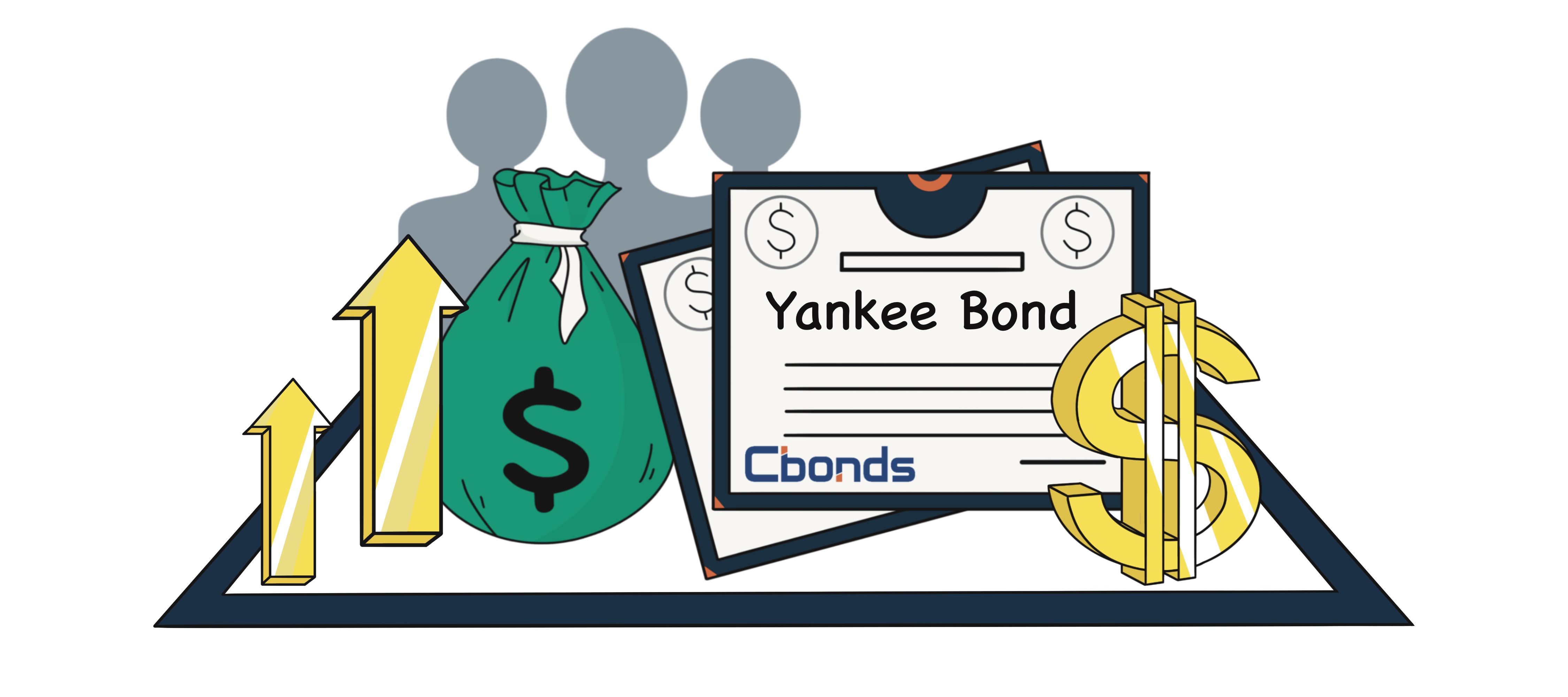By
Konstantin Vasilev Member of the Board of Directors of Cbonds, Ph.D. in Economics
Updated August 06, 2023
What is a Yankee bond?
A Yankee bond is a type of debt instrument issued by a foreign entity, such as a foreign government or corporation, to raise funds from American investors and tap into the U.S. financial market. The key characteristic of a Yankee bond is that it is denominated in U.S. dollars. However, the Yankee bond issuer is not based in the United States. These bonds are attractive to both issuers and investors: the foreign issuer gains access to a broader and diverse investor base, while U.S. investors can diversify their portfolios by investing in foreign debt without the need to deal with foreign currency exchange risks. Yankee bonds are typically listed and traded on U.S. exchanges, which adds to their liquidity and accessibility.
An example of a Yankee Bond is Fifth Third Bancorp, 3.65% 25jan2024, USD

What is the Yankee market?
The colloquial expression "Yankee market" refers to the stock market in the United States and is commonly used by individuals who are not U.S. residents. The term draws on the slang term "Yankee" or "Yank," which can be used playfully to refer to U.S. citizens but may also occasionally carry derogatory connotations, depending on the context and intent of the speaker. The use of "Yankee market" highlights the prominence and influence of the U.S. stock market on the global financial stage. As it attracts investors from various countries seeking opportunities and exposure to American companies.
Who issues Yankee bonds?
Europe is the primary issuer of Yankee bonds, contributing to 40% of the total issuance. Among the European countries, the United Kingdom, Germany, France, Switzerland, and the Netherlands are the top five issuers, collectively accounting for 70% of all Europe’s Yankee bonds and 28% of the global issuance.
What is the difference between Yankee bonds and Eurobonds?
Eurobonds and Yankee bonds are both dollar-denominated debt instruments, but they differ in terms of their trading locations and issuance. Eurobonds are issued by foreign entities but are denominated in a currency other than that of their country of residence or the market of issuance. These bonds are usually traded in international financial centers such as London or Luxembourg. Yankee bonds are issued by foreign companies and are dollar-denominated. However, they are issued and traded within the United States, allowing foreign issuers to directly access the U.S. financial market. The distinction between the two lies in their accessibility to investors and the regulatory framework under which they operate, with Eurobonds being more widely accessible and Yankee bonds being specifically targeted at the U.S. market.
Advantages and disadvantages of Yankee bonds
Yankee Bonds offer American investors the advantage of higher returns compared to American bond issuers while also providing an opportunity to diversify their international portfolios. These bonds can reduce foreign exchange risk when investing in foreign companies. For issuers, Yankee Bonds presents a potential win-win scenario. They can access cheaper financing capital at if U.S. bond rates are significantly lower than those in their home countries. The size and active trading of the U.S. bond market also favor the issuer, especially for large debt offerings. Although initial regulatory requirements may pose some challenges, the overall legal framework in the U.S. can be less stringent, allowing for more flexibility in the process of issuance.
However, the following downsides should be considered. Firstly, the major drawback is the potentially time-consuming approval process due to strict U.S. regulations, which can extend beyond three months. Moreover, currency risk remains a concern despite the bonds denominating in U.S. dollars.
The interest rate environment is another consideration, as it can impact the pricing and performance of Yankee Bonds. If interest rates change significantly after issuance, it may affect how well these bonds are received in the market.
Furthermore, Yankee Bonds can be influenced by the economic situation in the issuer’s home country. Economic instability can affect the issuer’s ability to repay the debt.
Finally, currency risk remains a concern for the issuer, as its home currency may depreciate against USD raising the costs of debt servicing.
What does a reverse Yankee bond mean?
The reverse Yankee market and reverse Yankee bonds refer to U.S. companies that engage in the Eurobond market. In this context, "reverse" indicates that it is the opposite of the traditional arrangement, where non-U.S. entities issue Yankee bonds in the U.S. market denominated in USD. Instead, in the reverse Yankee market, U.S. companies issue bonds in the Euro bond market, denominated in a currency other than the U.S. dollar, offering an alternative means to raise capital and tap into the international investor base.
Bond Screener
Watchlist
Excel add-in
API














